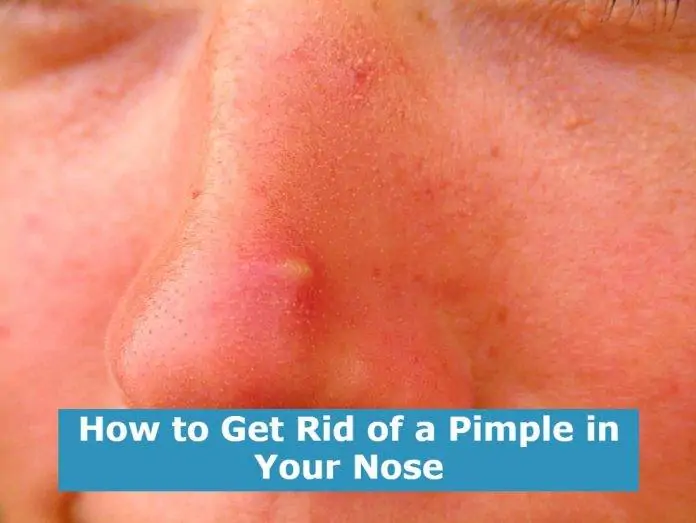If you’re having trouble with pimples on your nose, you can find a great deal of information on how to get rid of them. There are many options, and you’ll be able to decide whether you want to use an over-the-counter product, a prescription drug, or both. And you’ll want to consider what might be causing your pimples, as well as how you can prevent them.
Treatment
A pimple in your nose can be a frustrating condition to deal with. However, if it is not caused by a bacterial infection, it is possible to clear up the problem on your own.
If the pimple is caused by a staph infection, antibiotics may be the best option. Antibiotic ointments such as bacitracin (Centanyl) or mupirocin (Centanyl) can kill the infection and provide relief.
Another option is to take a trip to the dermatologist. Your doctor can determine if the pimple is caused by a bacterial or viral infection. He or she can also recommend topical ointments to help clear up the pimple and relieve pain.
An effective skincare routine can help prevent the formation of future pimples. This includes washing your face twice a day. Applying a gentle cleanser can help get rid of any dead skin cells and oil build-up.
Preventing
Pimples in the nose can be painful and annoying. They may appear as whiteheads or blackheads. In some cases, they can be cysts. The best way to prevent pimples in your nose is to avoid touching the area. Picking and popping a pimple can cause additional breakouts.
Using a warm washcloth can also help prevent pimples. This is especially important if you have a cold. It’s also good to use a mild soap. Taking a shower can be a big help, since it will wash away any debris and excess oil.
Make sure to wash your face every day. You don’t want to overwash your skin, because it can strip it of oils.
Using a face scrub once or twice a week is also a good idea. This will help keep your pores clean and reduce the buildup of dead skin cells.
Common causes
The nose is one of the most common areas of the body to develop pimples. They are caused by a combination of dead skin cells, bacteria, and oil. A few of the most common types of pimples are acne vulgaris and folliculitis. However, a pimple inside the nose can also be a sign of a more serious infection.
If you have an infected pimple, you need to take action to ensure that it doesn’t spread. This can be dangerous if the bacteria are transmitted to your bloodstream. Your doctor can help you find the right antibiotic to treat the infection.
Nose pimples can also be painful. To avoid further irritation, avoid touching your nose. When you are cleaning your face, use an antimicrobial mouthwash. For a more effective treatment, apply a warm, wet compress to the infected area for 20 minutes. You can repeat this treatment three times a day.
Over-the-counter
Pimples in the nose are not uncommon, but they can be very painful. It is important to know what causes them and how to treat them. If they are caused by a bacterial infection, you can try a topical antiseptic ointment.
A warm compress applied to the pimple for five minutes can help reduce the pain. You can also apply ice to the affected area. Ice has anti-inflammatory properties, and helps to reduce swelling.
Apple cider vinegar is another effective treatment for acne. This is a natural antiseptic, and it is particularly effective at fighting the bacteria that cause acne. To apply it, you can soak a cotton bud in apple cider vinegar, and hold it on the pimple for 30 minutes.
prescription medications
If you have a pimple in your nose, you may be wondering how to get rid of it. Luckily, there are some simple ways to do so, including using prescription medications.
Before taking any medication, it is important to determine what caused the pimple. If it is caused by bacteria, you might want to try an antibiotic. However, if the infection is caused by a virus, you will need to seek a doctor’s advice. Depending on the cause, your doctor might prescribe antibiotics or topical ointments.
The first step to treating the pimple is to clean the affected area. Applying a warm, wet compress to the affected area can help reduce swelling and pain. You can also use ice to help reduce inflammation.




